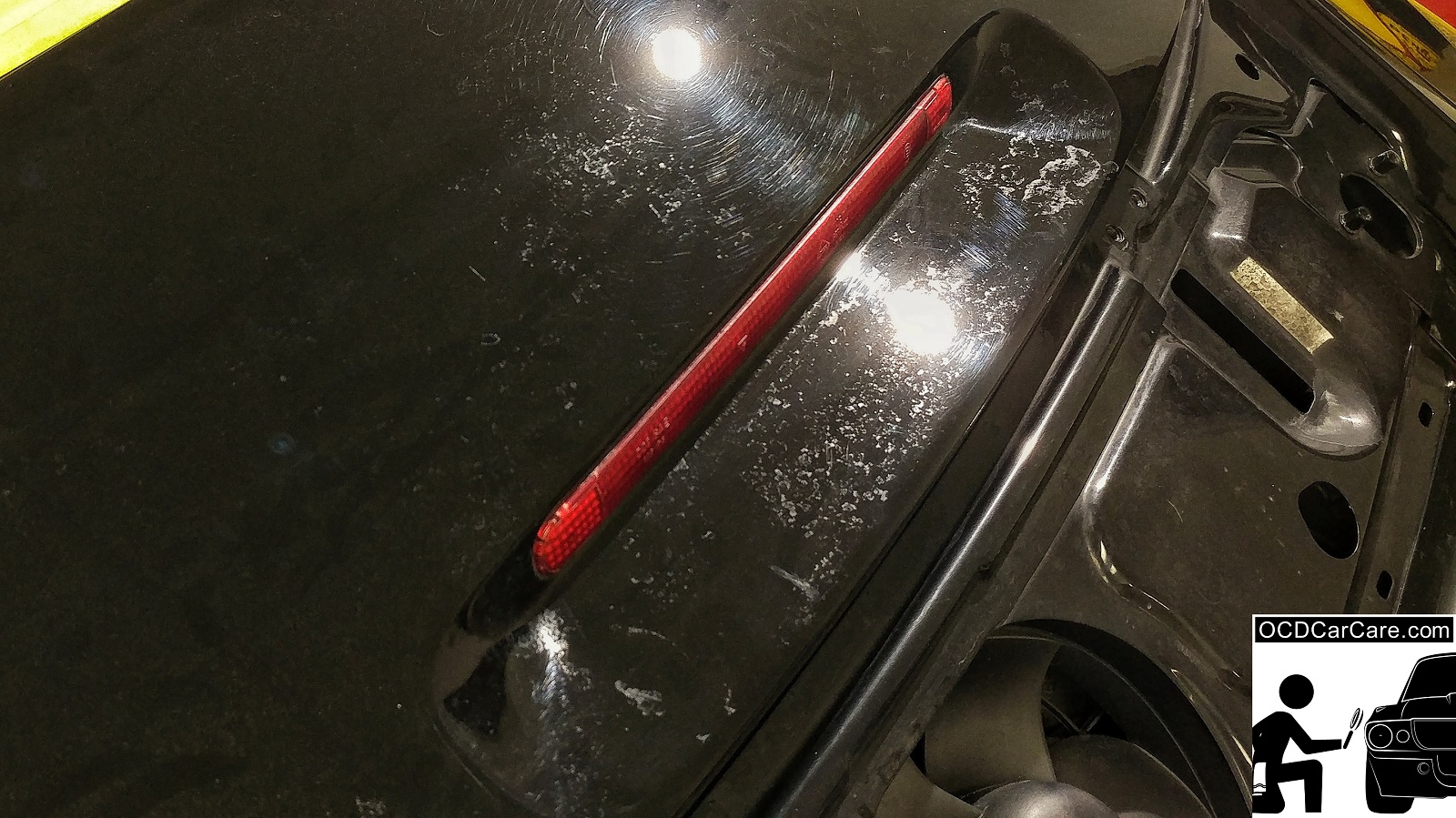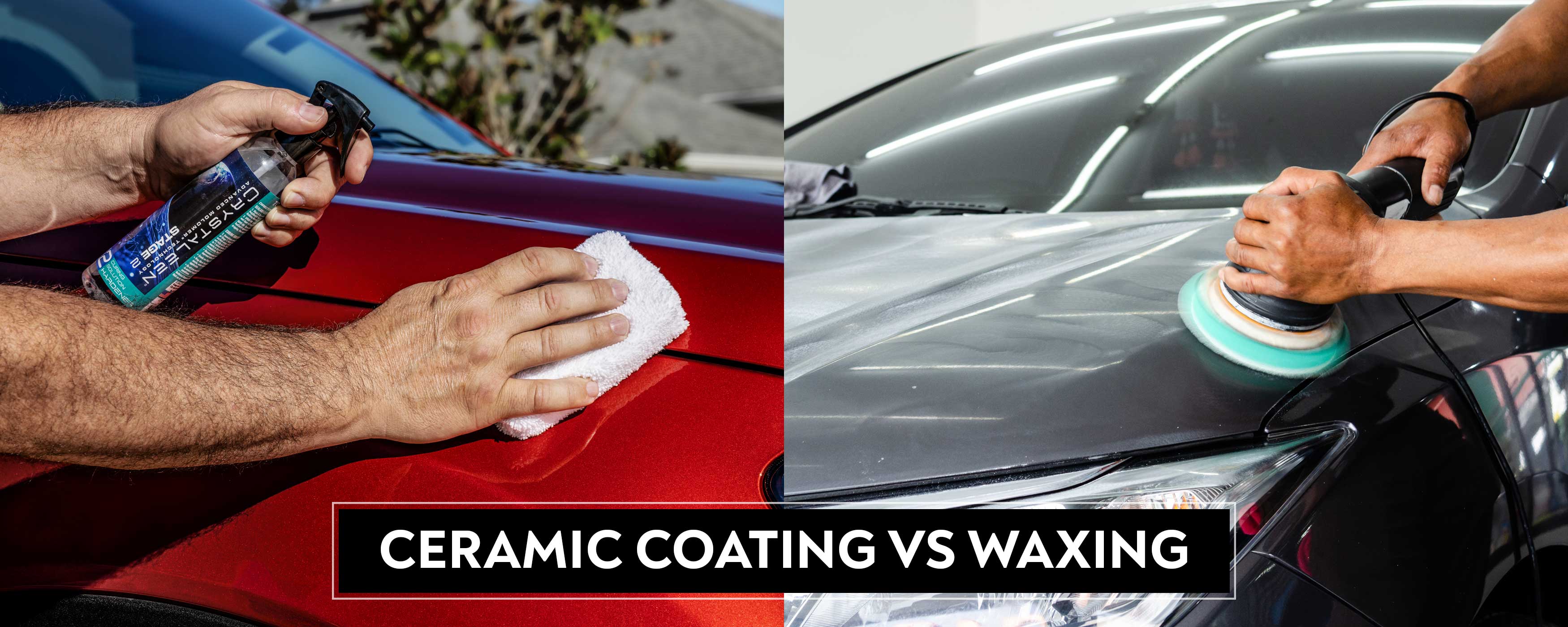Ceramic Coating vs Traditional Wax: Which Offers Better Protection?
Ceramic Coating vs Traditional Wax: Which Offers Better Protection?
Blog Article
Ceramic Finishing vs. Standard Wax: Which Provides Much Better Long-Term Defense?
The debate in between ceramic coverings and standard wax for lorry defense has actually amassed substantial focus amongst automobile enthusiasts and professionals alike. Ceramic coatings boast exceptional durability and resistance to ecological elements, yet the intricacy of their application raises concerns about ease of access and practicality.
Introduction of Ceramic Coating
Ceramic covering has actually acquired considerable popularity among automotive lovers and detailers alike as a result of its advanced protective qualities. This cutting-edge modern technology is created to produce a resilient, hydrophobic shield over a car's paint surface, significantly boosting its resistance to ecological contaminants such as dust, UV rays, and chemical spots. Unlike typical wax, which supplies a short-lived layer of protection, ceramic coatings bond at a molecular degree with the paint, providing resilient longevity-- usually expanding past 2 years with appropriate maintenance.
The application procedure includes precise preparation of the automobile's surface, including cleansing and polishing to make certain ideal bond. Once applied, the finish treatments to develop a durable layer that not just adds deepness and gloss to the paint however additionally simplifies maintenance. With its hydrophobic residential or commercial properties, ceramic covering permits water and dust to move off more easily, lowering the regularity of washes and decreasing the risk of swirl marks.
Additionally, ceramic finishes are readily available in different solutions, permitting customers to choose products tailored to their details needs and preferences. Generally, ceramic covering stands for a significant innovation in paint protection innovation, delivering premium efficiency compared to standard choices.
Introduction of Conventional Wax
Commonly pertained to as a staple in vehicle care, wax functions as a popular choice for those seeking a straightforward method to enhance and protect their lorry's paint - ceramic coating. Automotive wax usually comprises natural active ingredients, such as carnauba, or synthetic substances, created to produce a protective layer on the surface of the paint. This layer not just improves the car's gloss and radiate but additionally gives a barrier against ecological impurities
The application of wax is normally user-friendly, making it accessible for both experts and DIY enthusiasts. It can be used by hand or machine, enabling for flexibility in the detailing process. As soon as applied, wax calls for a curing period, after which it sets to develop a safety shell. Wax is additionally understood for its capability to ward off water, advertising a beading impact that assists in the prevention of water areas and deterioration.
Nonetheless, while wax is reliable for enhancing the visual charm of a vehicle, it is necessary to note that the defense it offers may necessitate much more regular reapplication contrasted to alternate items, such as ceramic layers. In general, typical wax stays a popular choice for those prioritizing simplicity of use and prompt visual enhancement.
Resilience and Longevity Contrast
While both ceramic layers and conventional wax offer protective benefits for automotive paint, their sturdiness and long life vary dramatically. Traditional wax, commonly made from all-natural carnauba or artificial polymers, typically supplies a browse around this web-site safety layer that lasts roughly 3 to 6 months. This reasonably brief life-span necessitates routine reapplication to keep optimal security.
In comparison, ceramic layers are engineered from advanced nanotechnology, developing a covalent bond with the paint surface area. This leads to a robust, hydrophobic layer that can withstand for two to five years, depending upon the product and environmental conditions. The superior toughness of ceramic coatings is credited to their chemical structure, which uses enhanced resistance to scratches, UV rays, and oxidation.

Protection Against Environmental Elements
Protecting a lorry's paint from ecological variables is important for keeping its appearance and worth with time. Autos are frequently revealed to a range of aspects, including UV rays, bird droppings, tree sap, acid rainfall, and roadway crud, all of which can endanger the integrity of the paintwork.
Ceramic coatings offer a robust defense against these ecological aggressors. Unlike conventional wax, which can weaken rapidly under UV exposure, ceramic coverings develop a durable, hydrophobic layer that stands up to the damaging results of sunshine and toxic wastes. This innovative innovation develops a chemical bond with the car's surface, using remarkable defense that lasts for many years, also in harsh conditions.
In comparison, ceramic coverings preserve their protective high qualities longer, substantially lowering the threat of paint damages and guaranteeing that the automobile retains its aesthetic appeal. As a result, ceramic finishes are increasingly identified as the superior option for lasting protection versus ecological elements.
Application and Maintenance Differences
The techniques of application and subsequent upkeep for ceramic layers and traditional wax vary dramatically, affecting the overall user experience and effectiveness of each item. Ceramic finishes require a more complex application process, normally including surface area preparation that consists of cleaning, decontaminating, and brightening the car. Once the surface area is ready, the ceramic coating is used in a controlled atmosphere, typically needing expert know-how to make sure proper healing and bonding to the paint.

While both products improve lorry appearance, the longer-lasting security offered by ceramic finishes may validate their first investment, despite the even more demanding application procedure. On the other hand, typical wax remains a prominent selection for those seeking a simpler, albeit short-term, service.

Verdict
To conclude, find more info ceramic finishings demonstrate considerable advantages over standard wax in regards to durability and environmental protection. With a lifespan expanding two to 5 years and premium resistance to UV rays, dust, and chemical discolorations, ceramic coatings supply a much more reliable option for long-lasting automobile upkeep. Although the application process might call for expert experience, the resulting price financial savings and minimized frequency of reapplication underscore the worth of ceramic coatings for those looking for optimum automobile defense.
The argument in between ceramic finishes and traditional wax for lorry protection has garnered considerable focus among auto enthusiasts and professionals alike. Unlike traditional wax, which supplies a short-lived layer of security, ceramic coverings bond at a molecular level with the paint, supplying durable toughness-- frequently expanding beyond 2 years with correct maintenance.
While both ceramic coatings and conventional wax deal safety benefits for automobile paint, their durability and long life differ significantly. For automobile enthusiasts seeking lasting protection, ceramic finishes offer a compelling benefit over traditional wax products.
In final thought, ceramic coatings demonstrate significant advantages over typical wax in terms of sturdiness and environmental defense.
Report this page